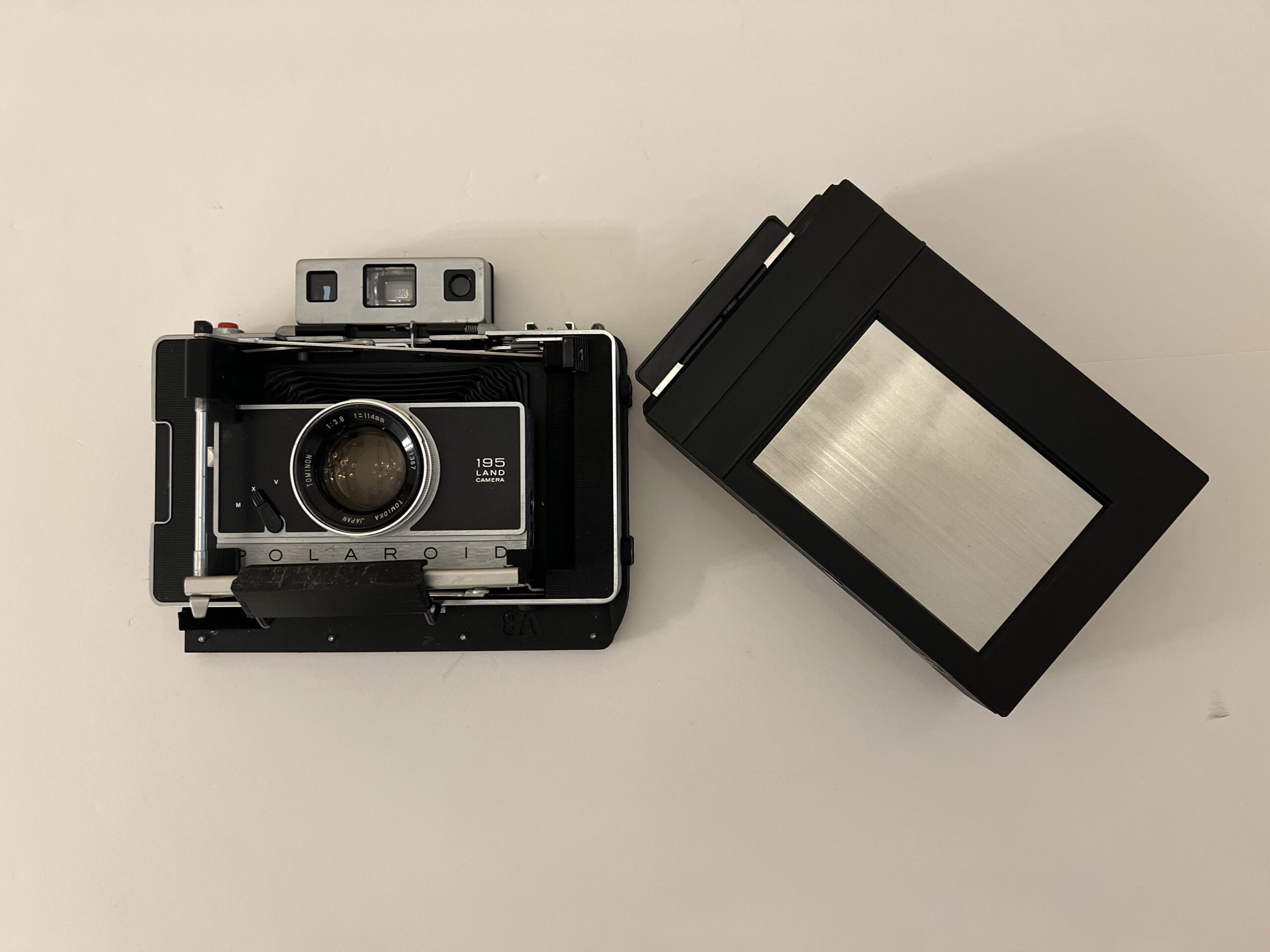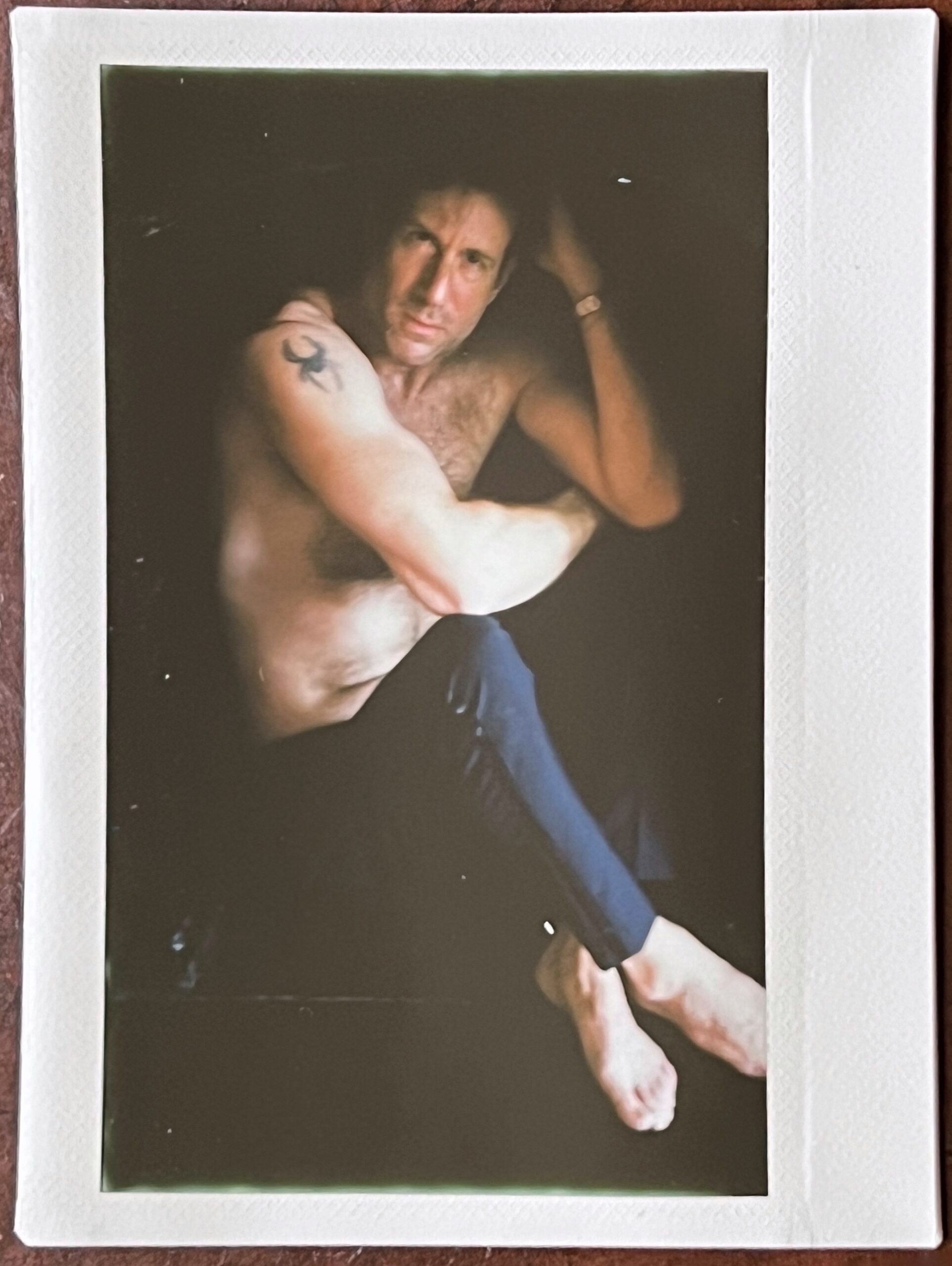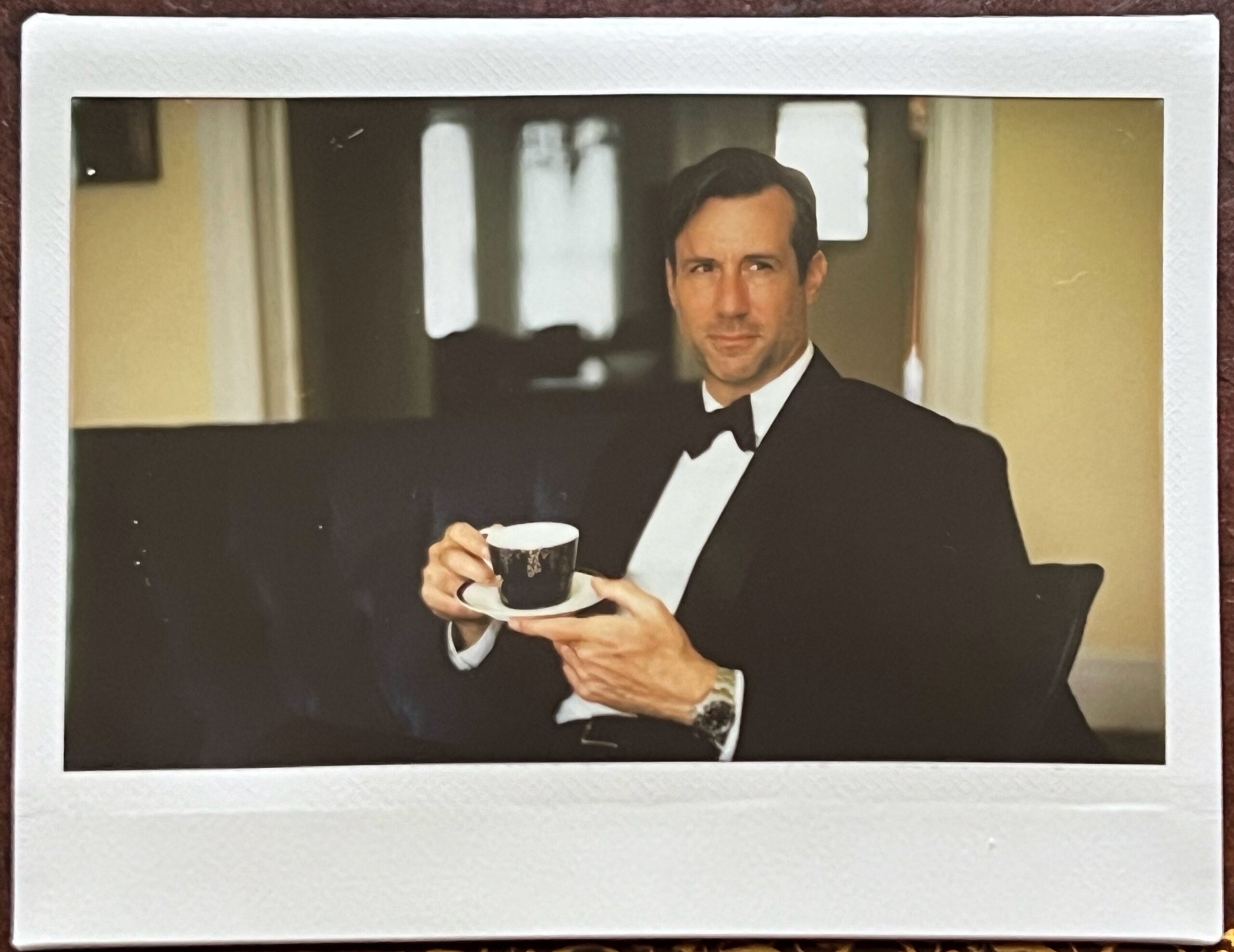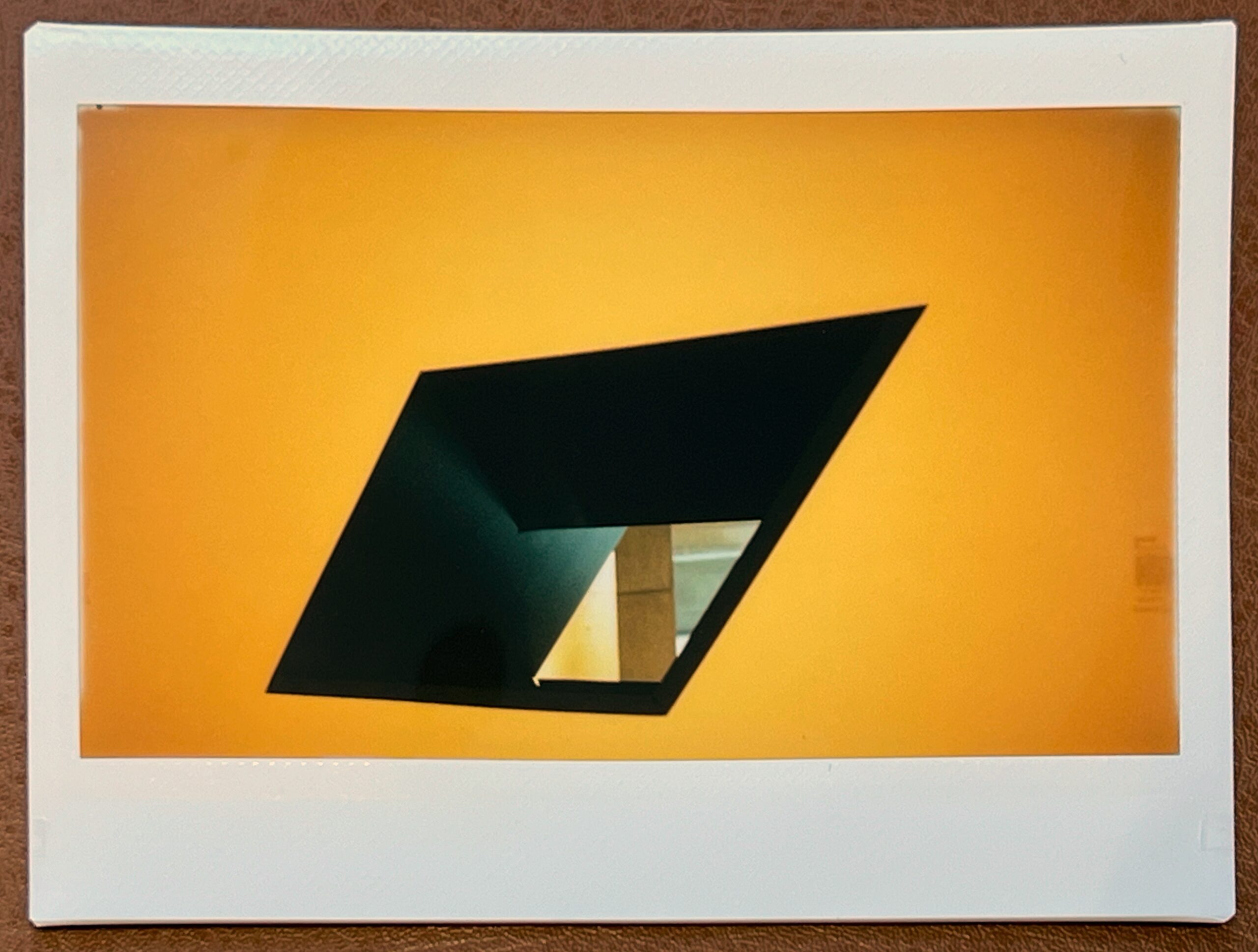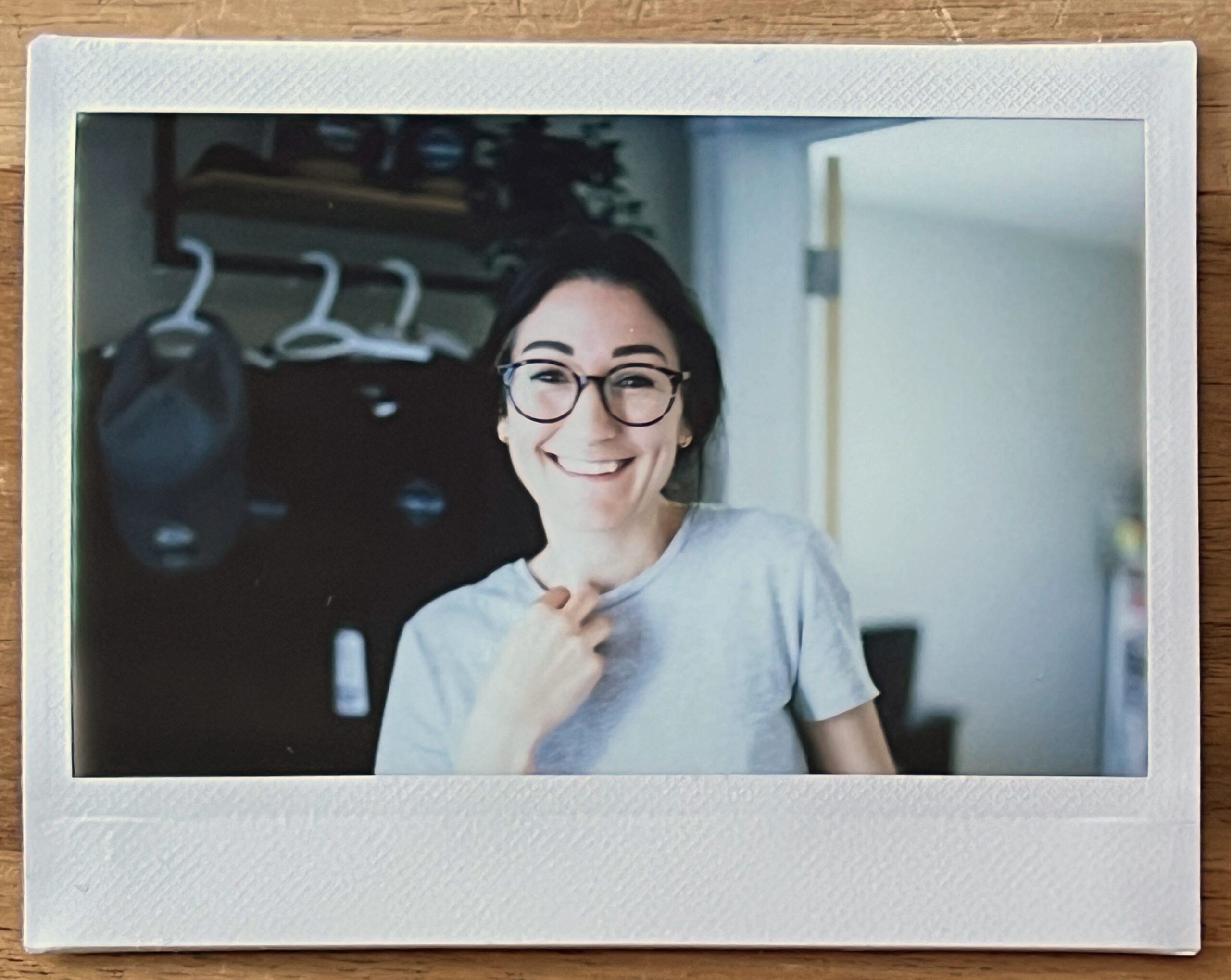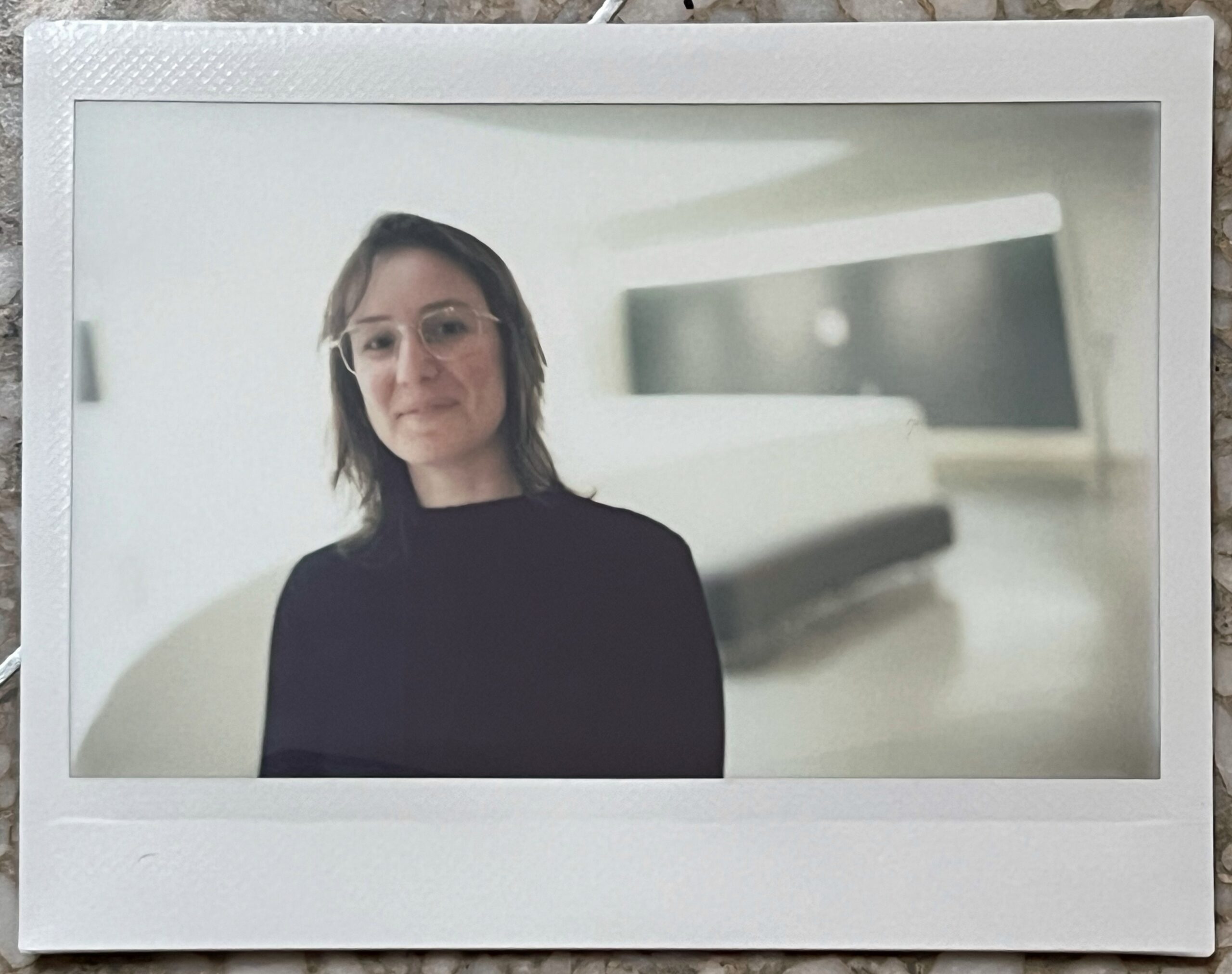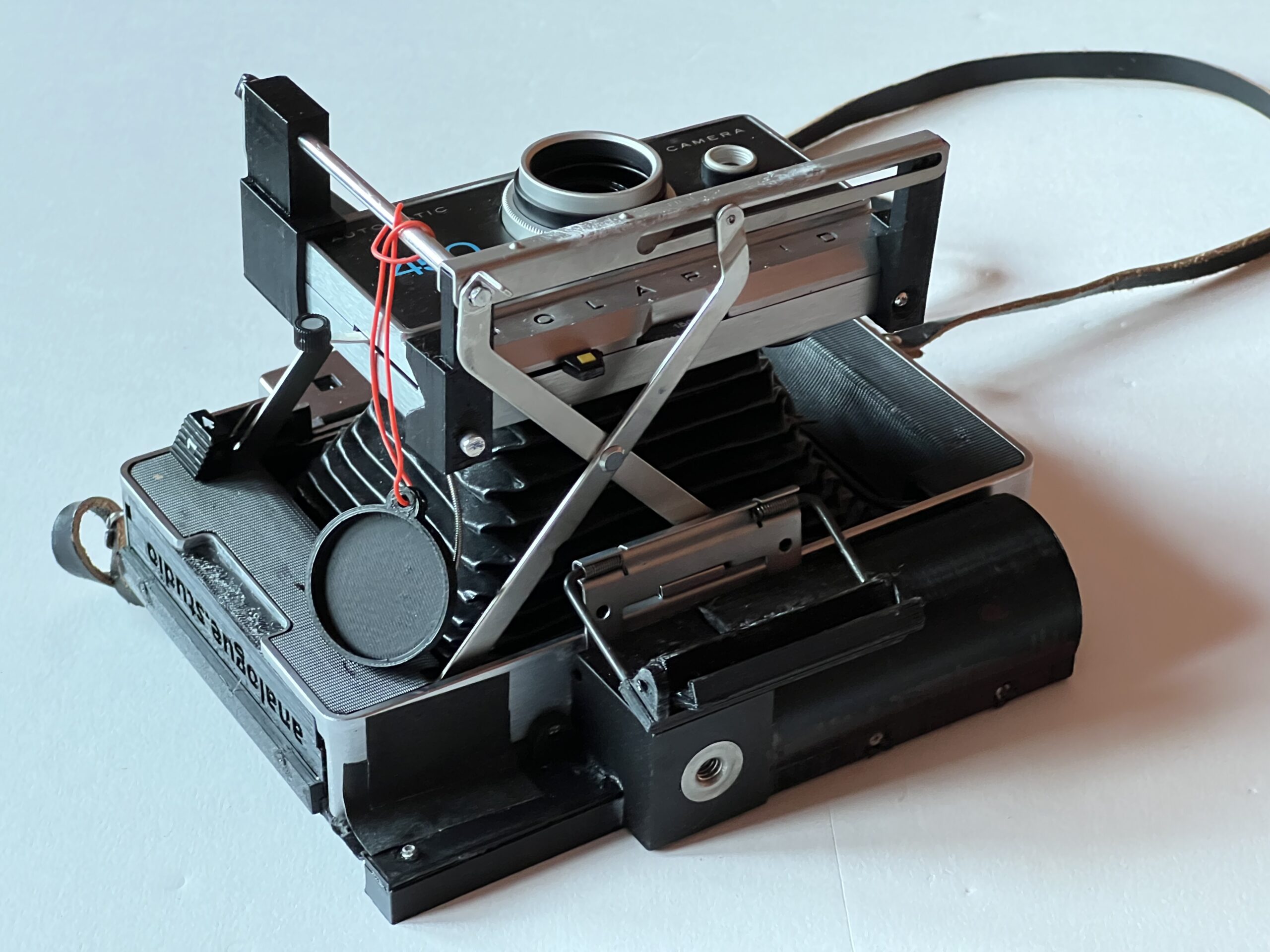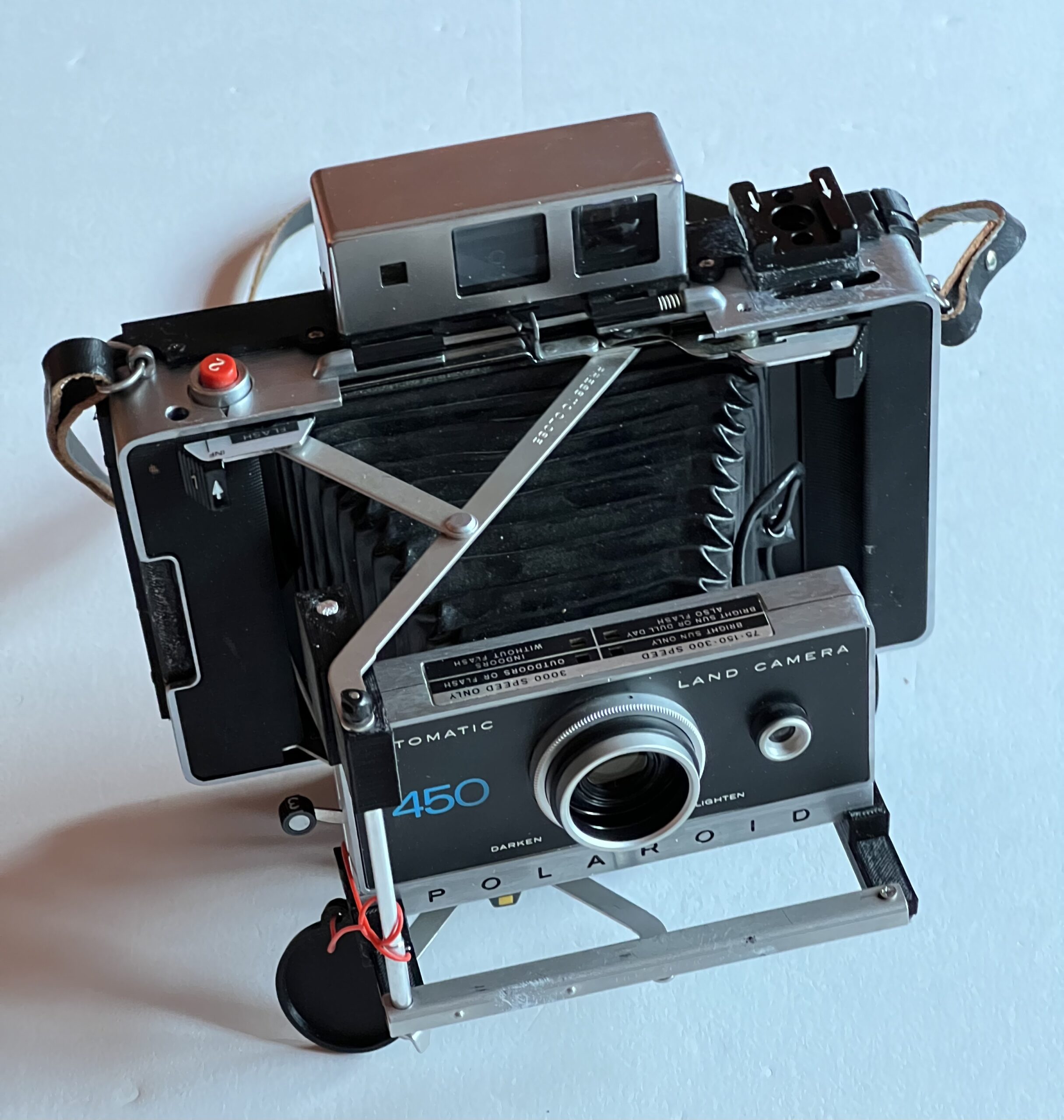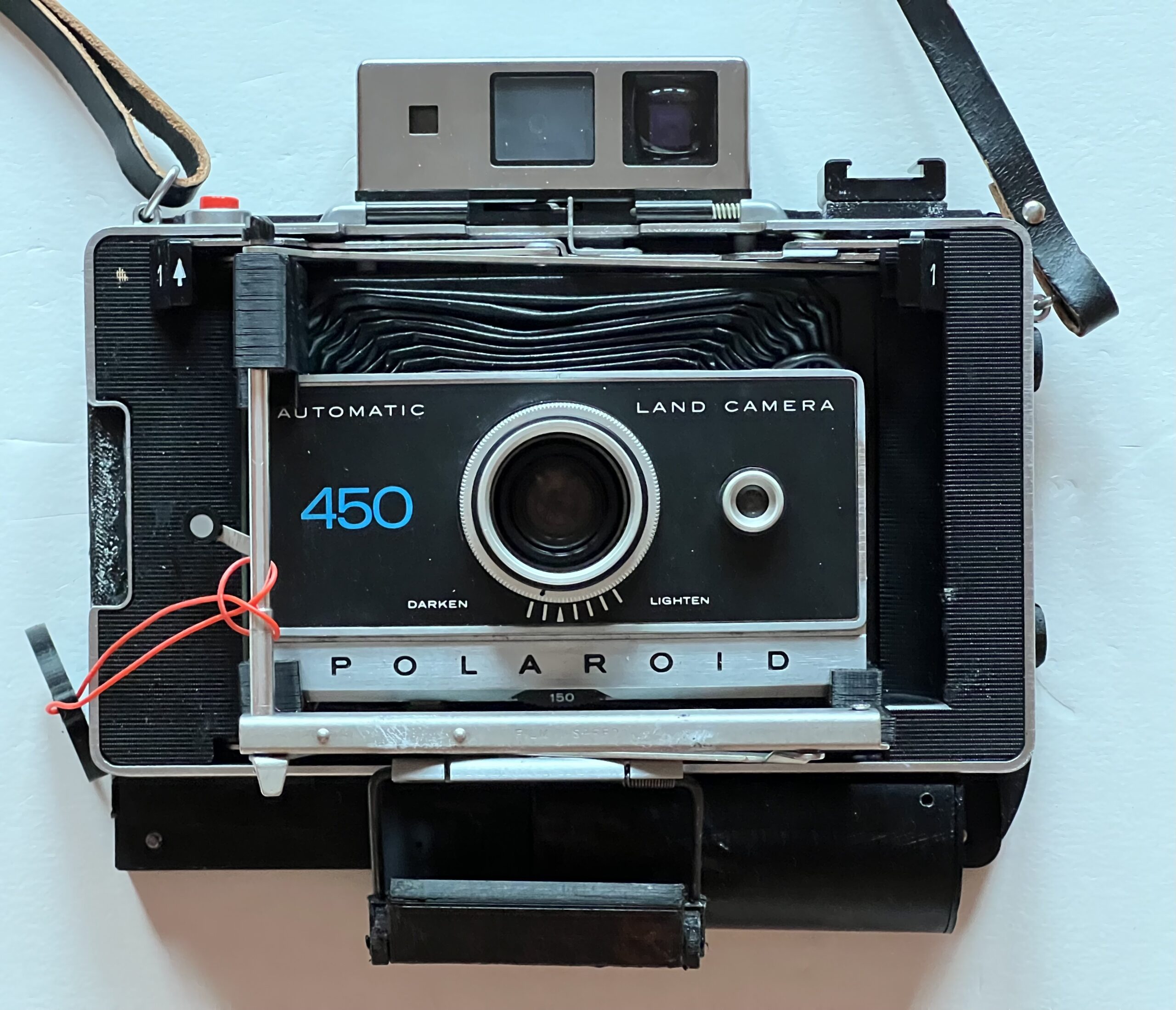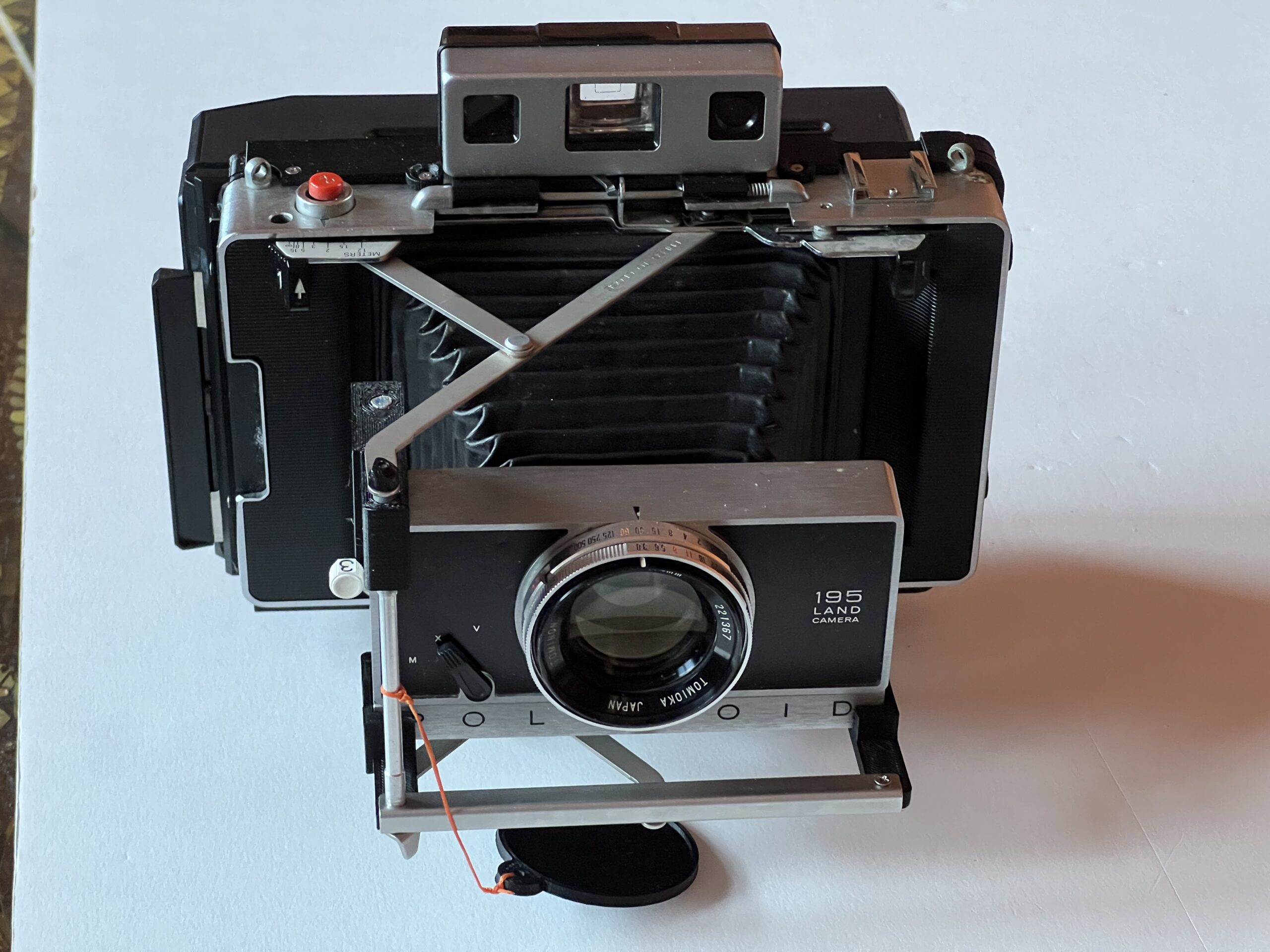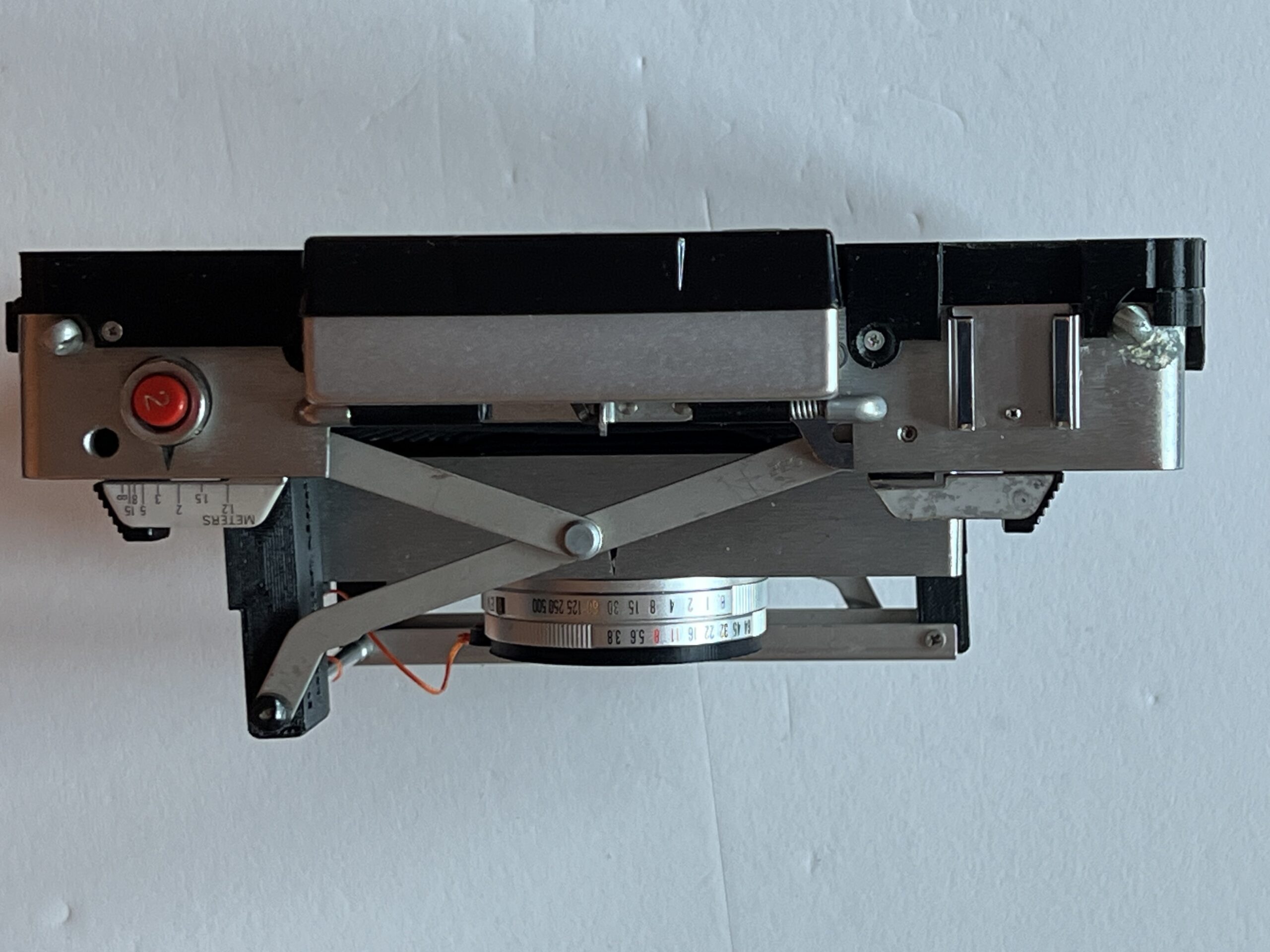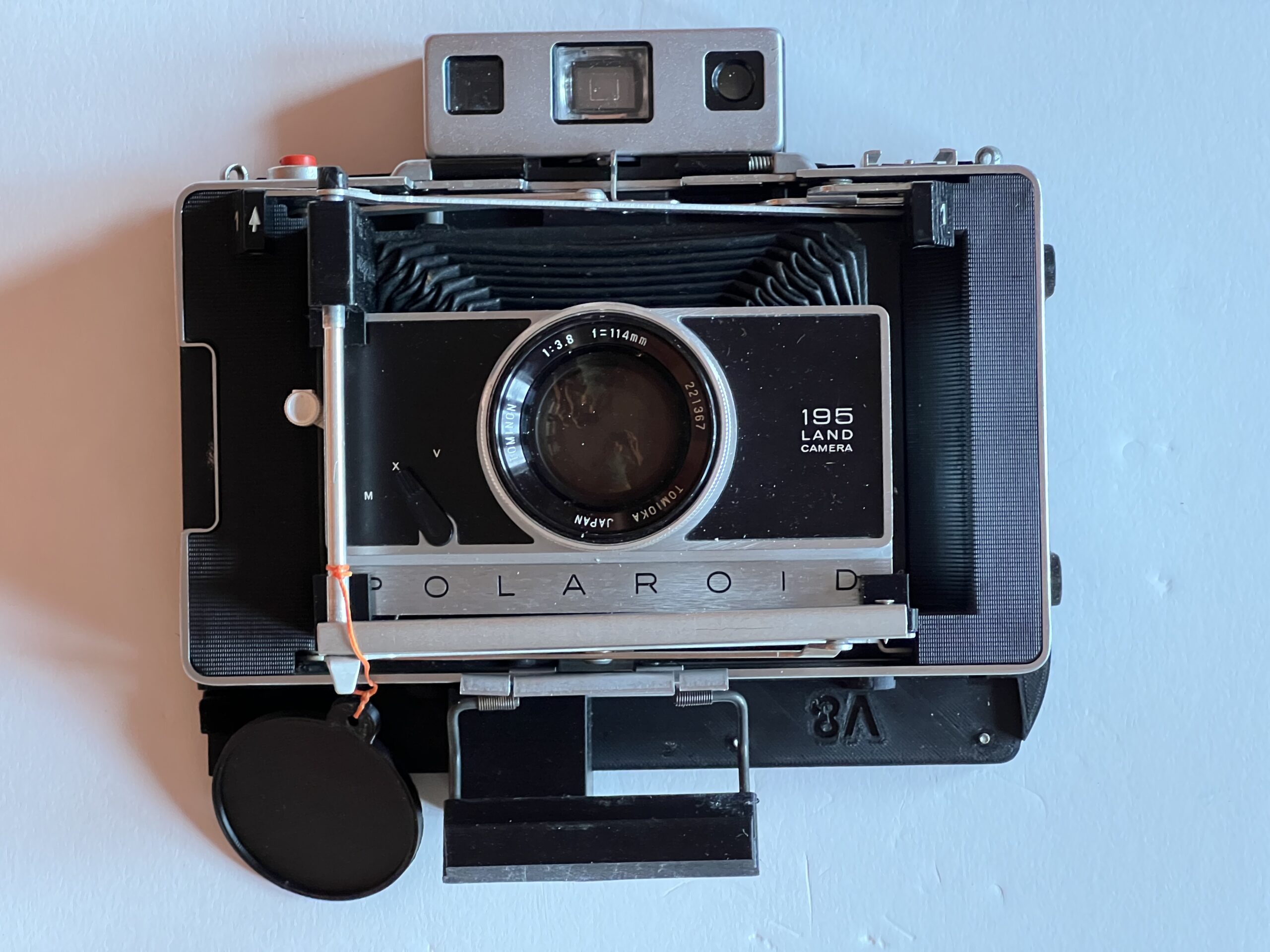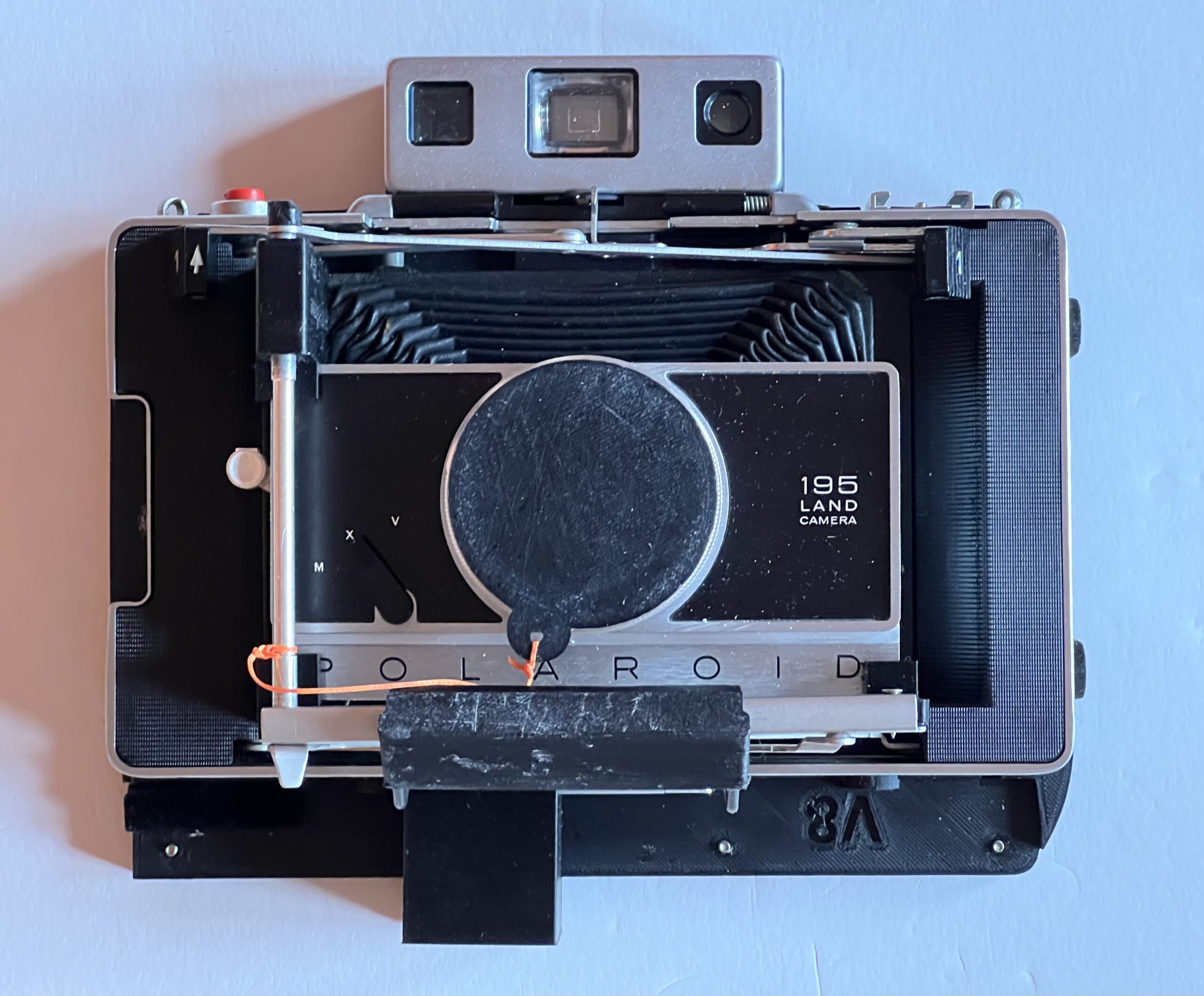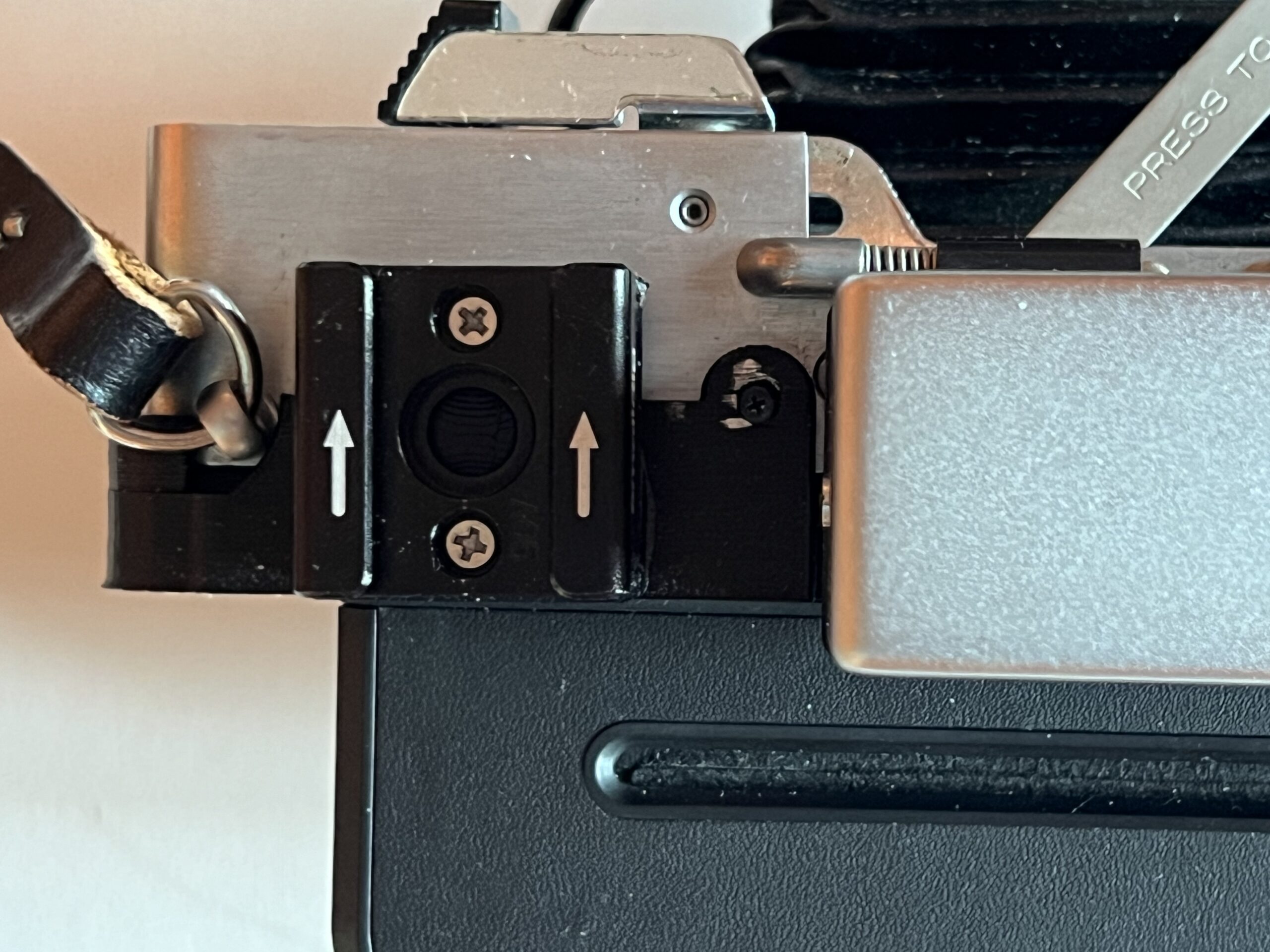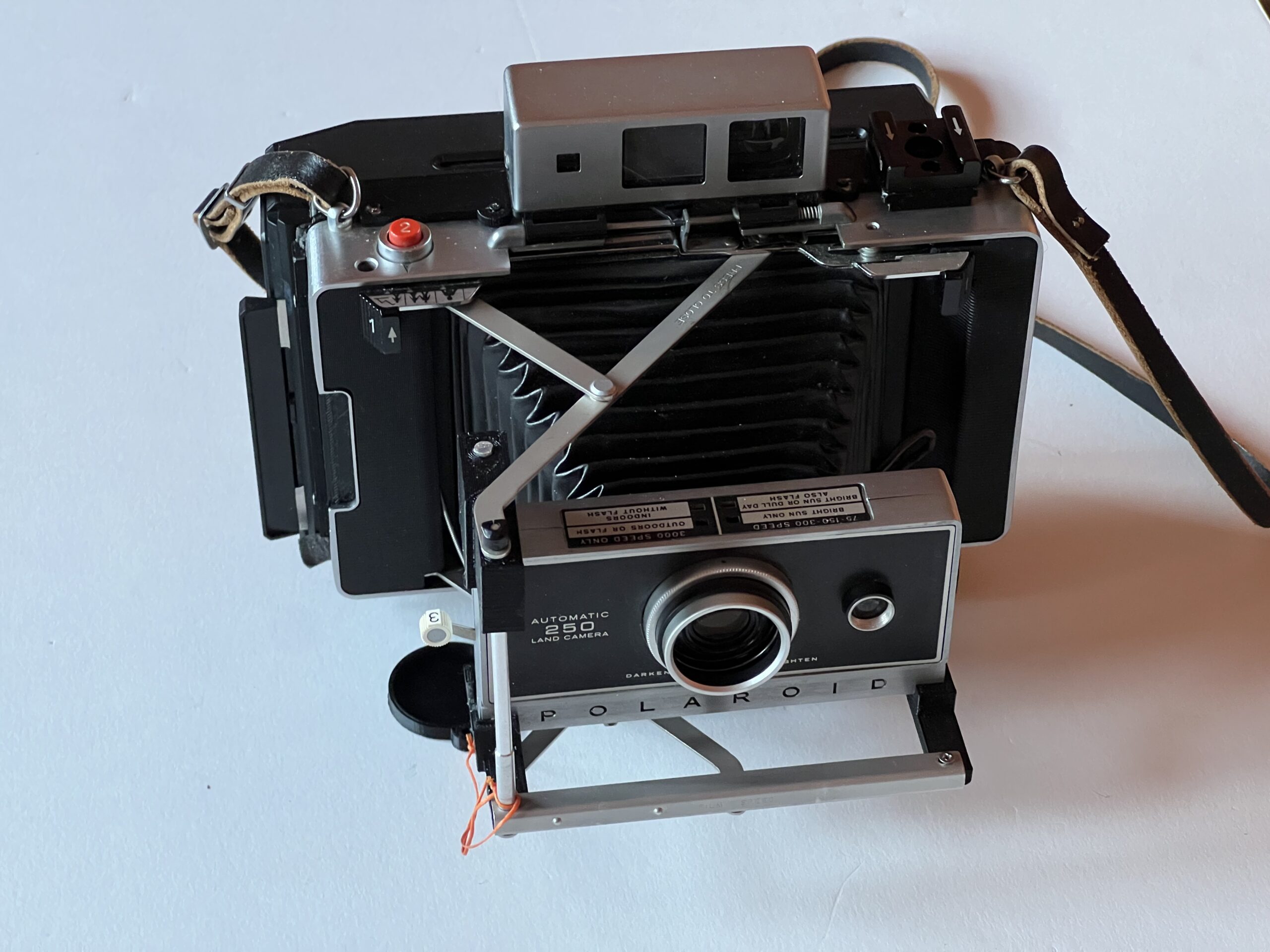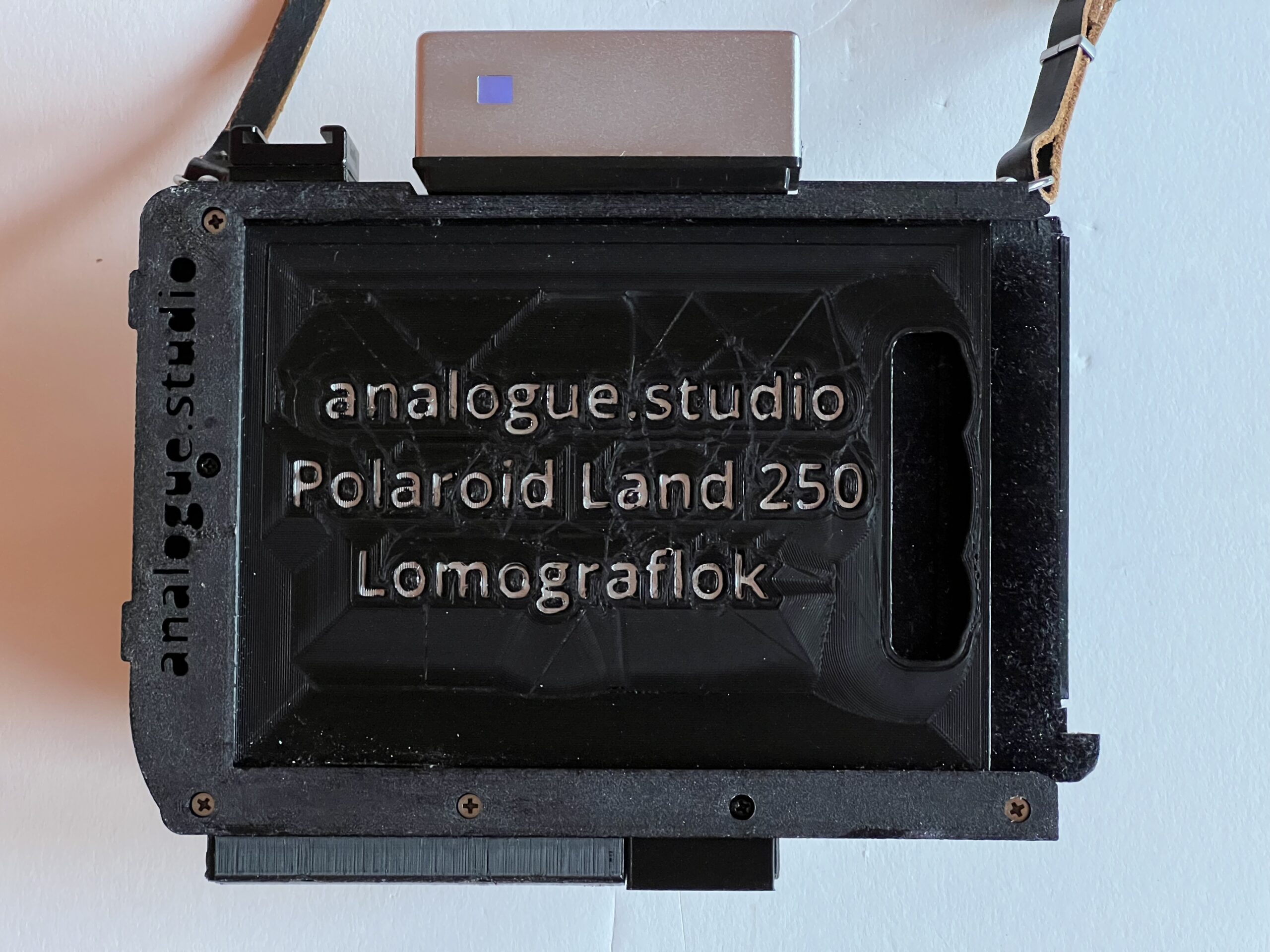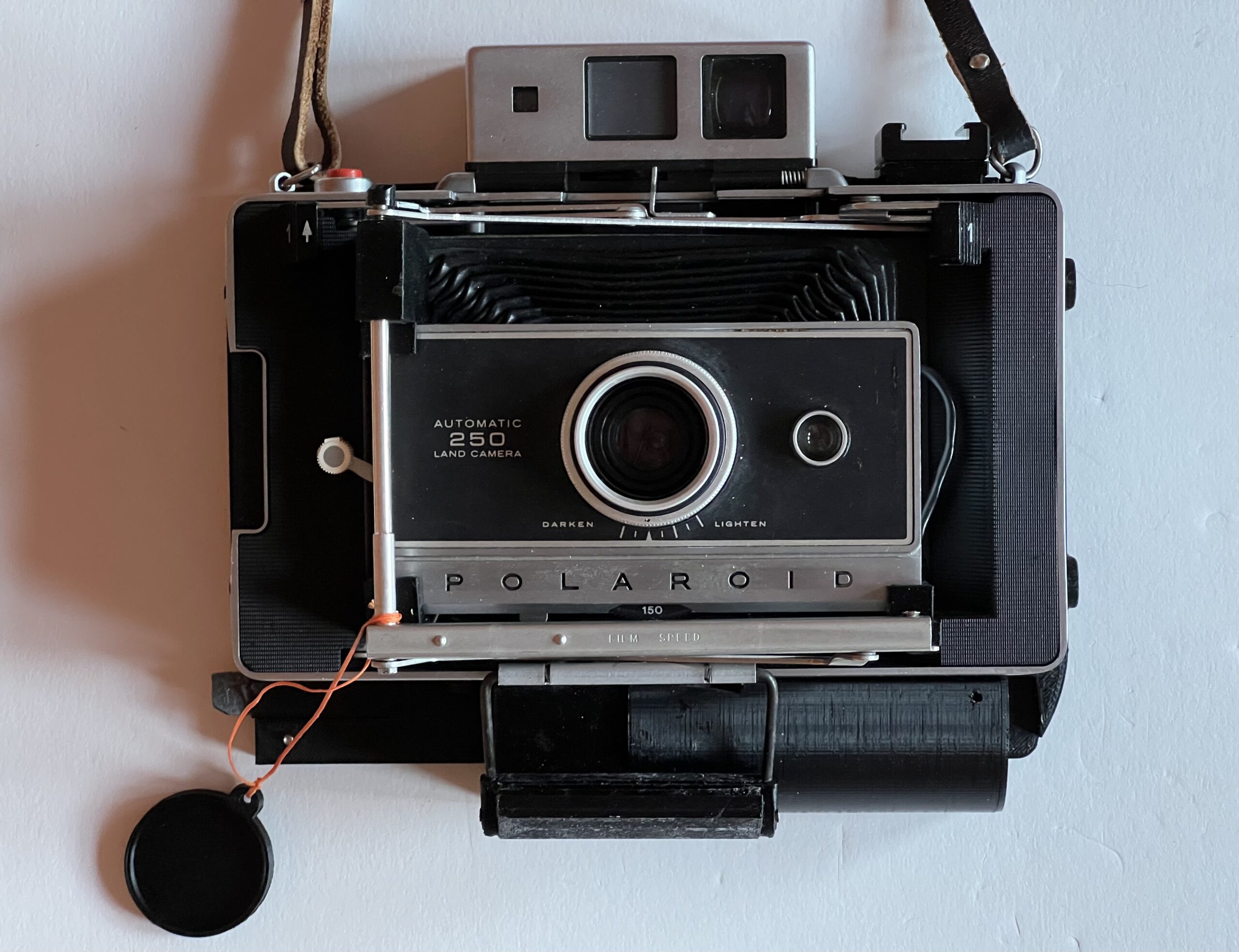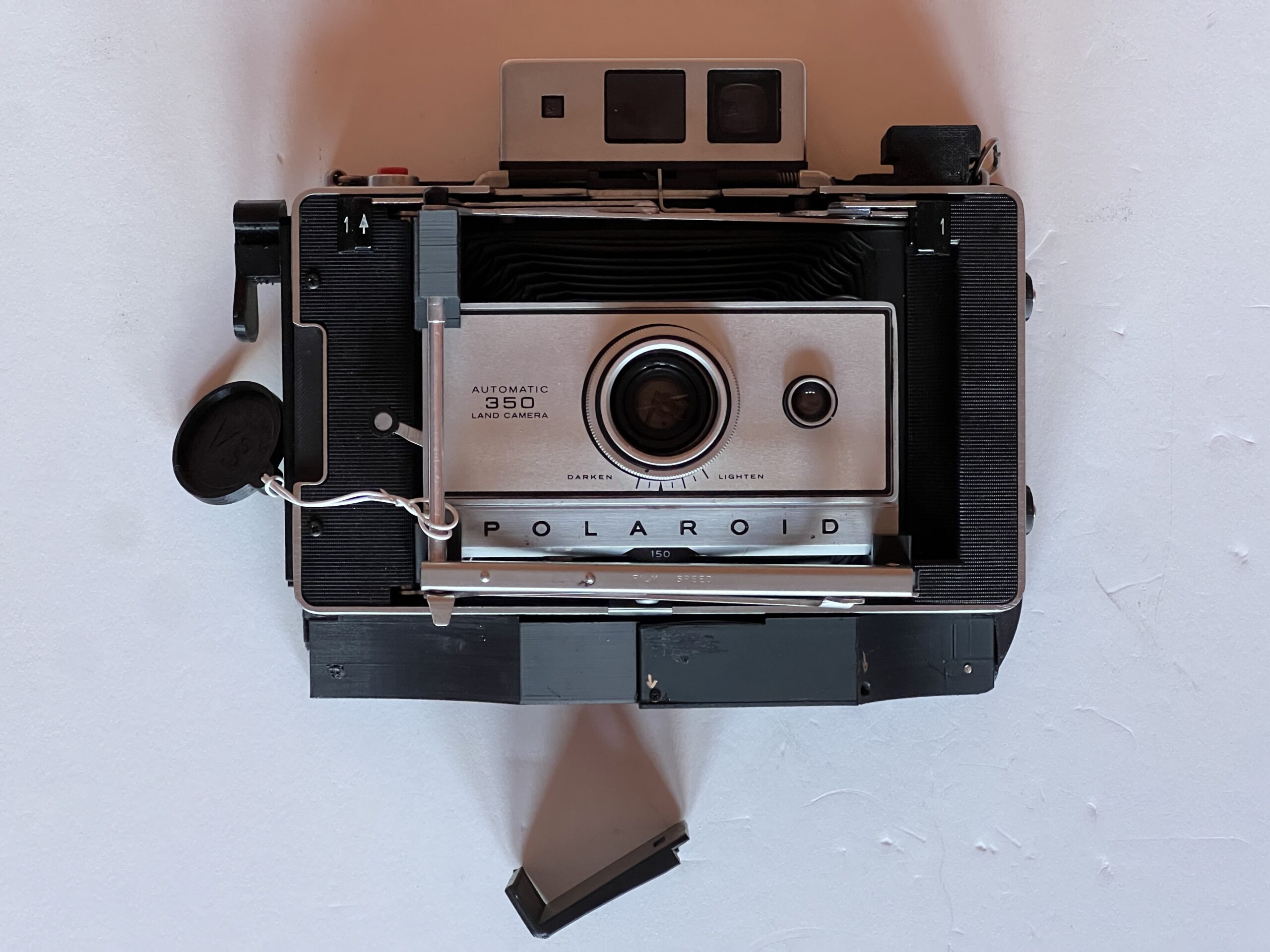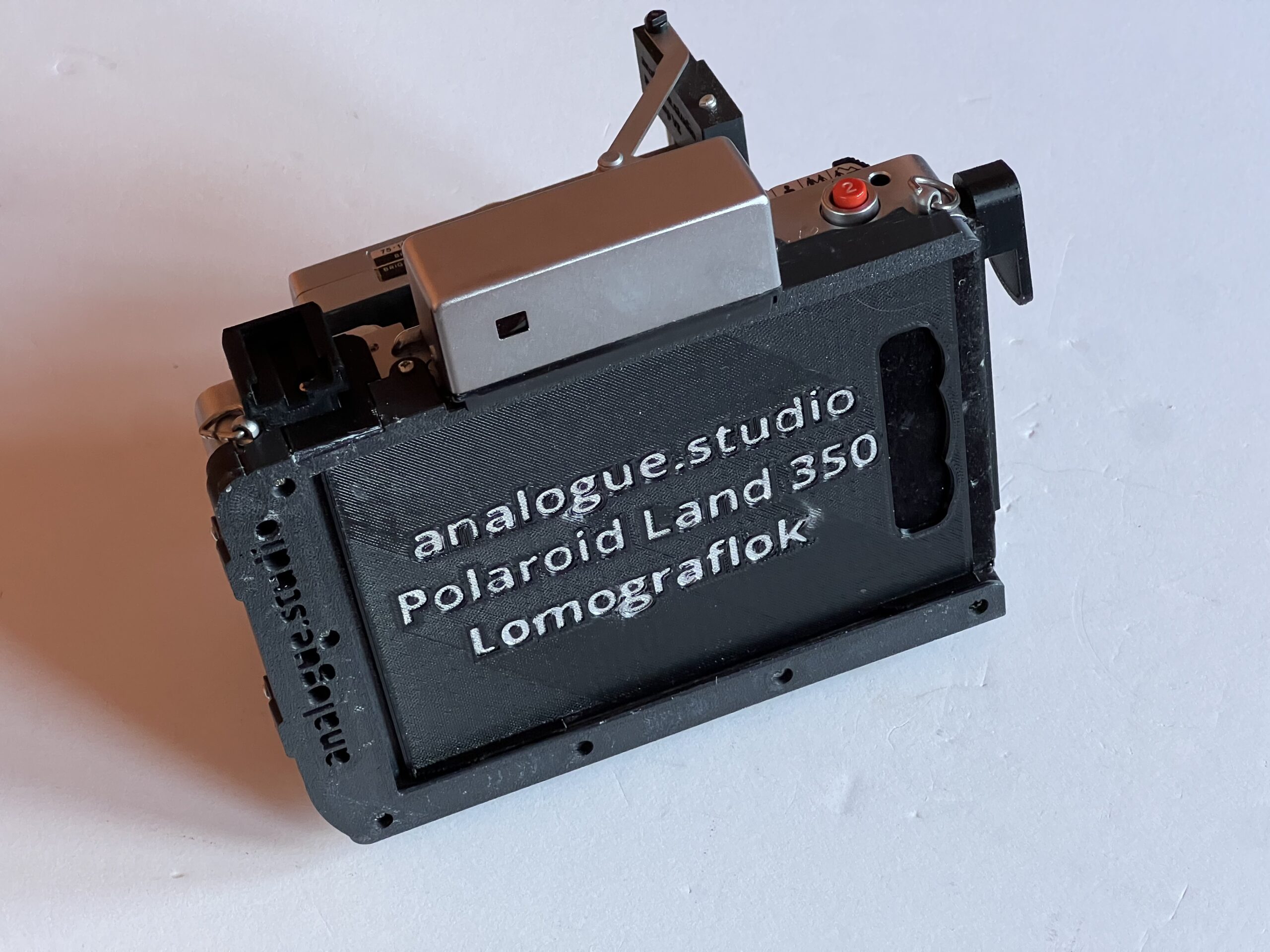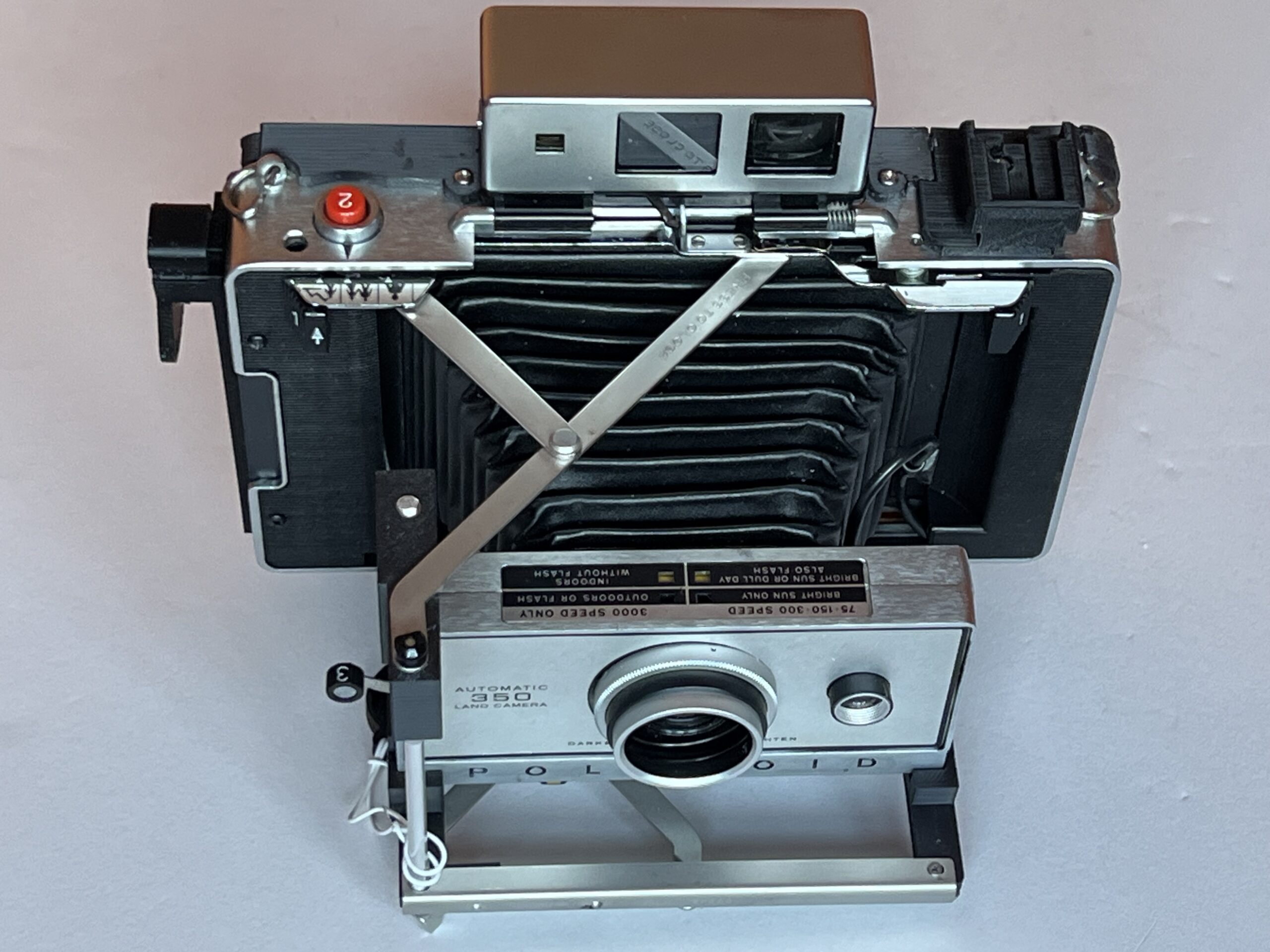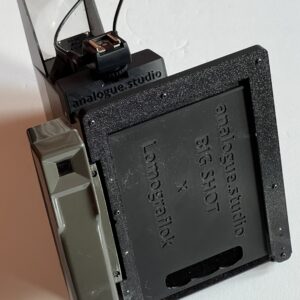Price range: $295.00 through $649.00
Polaroid Land camera to (a removable) Lomograflok conversion service.
Does not include a Lomograflok.
You send me your working camera, I am converting it and sending back to you. (DO NOT send me your Lomograflok, it’s removable!). Camera needs to have a working manual/automatic shutter. Fully test all the speeds on your manual cameras. I can’t fix shutters.
I am on vacation until December 8th 2025. Any order lead time starts from that date, i cannot work on this while I’m not in my shop.
Lead time for conversion is about 3 weeks to SHIPPING from the moment I receive the camera.
Description
I am on vacation until December 8th 2025. Any order lead time starts from that date, i cannot work on this while I’m not in my shop.
Lead time for any conversion is about 3 weeks to shipping from the moment I receive your camera. For cameras I have in stock, I can ship in 1-2 days if I am home.
Introducing a conversion service for MOST Polaroid Land camera which allows you to shoot instax wide photos via a removable Lomography Lomograflok (not included).
Please DO NOT send me your Lomograflok too, I don’t need it for the conversion. Your Lomograflok will simply slide in the back of the camera once you get it. Turn it on, remove the dark slide and you’re ready to shoot.
Start by watching the (click on the link!) How To Guide in the Rescue Me section of the website!
I sometimes also have already converted cameras, check the ordering options. Again, this does NOT include a Lomograflok.
Why do this? Packfilm is now long discontinued and the orice of expired film comes down to about $10 or more a photo! Instax Wide is currently priced at about $1/ shot ( $20 for 2×10 prints).
This future proofs your beloved Polaroid Land packfilm camera and allows many more years of future use.
I have a working Polaroid Land and want it converted! What do I do?
You send me a _working_ camera and I convert it, then ship back to you. I cannot fix broken automatic shutters or CLA slow manual shutters.
As far as I know, the only model I cannot convert is the Polaroid 360 (electronics are in the back and I cannot mount the adapter rails). However, given the trouble and the mailing cost and the cost of the conversion, I would not bother converting any other models than ones with glass lenses, as in Polaroid 250, 350, 450, 455 and the fancy manual models Polaroid 180, 195, 190, and 185.
How am I doing the conversion?
Using your own Polaroid Land camera, I install a series of spacers to shift the lens standard back by the distance required to reach focus with the Lomograflock attached to the newly installed back Graflok style hooks.
Will you be able to shoot sheet film with this? No. The focal plane position matches the Lomograflok focal plane distance, substantially further back than the regular 4×5 film holders distance.
The mod allows you to simply slide the Lomograflok in for use, then take it out when you’re done and use it on any other system that accepts it, like a 4×5 camera, or hey, one of my converted Polaroid Pathfinders!
The modification preserves the rangefinder function (which I adjust for accurate close and infinity focus), and the flash sync on camera! You can use ANY flash, or even a wireless sync (if you connect the transmitter to the PC sync port on the camera lensboard).
IMPORTANT NOTE:
Due to design limitations, the Lomograflok mounts with the center of the images about ~20 mm ( 0.8 inches) lower that the optical axis. This does NOT result in any kind of noticeable vignetting even wide open, as the image circle on the lenses is huge, but it will require you to frame ~ 1/4th of the frame higher. In practice, if you want an object in the middle of the frame, you’ll just need to place it about ~ 1/4 higher in the viewfinder. For vertical framing, place the object ~1/4 frame towards the lens.
This works a lot better in practice that I can explain here, it’s better described in the How To video, and you definitely get used to it after ONE test shot.
The camera will still fold down, but not all the way (see photos). For my newest models, I also changed the locking hook style, and I am now providing an easier to use plastic hook that simply inserts unser the lensboard metal clip and locks the lens standard in place for transportation.
I am also converting Polaroid Land automatic models to use AAA batteries, housed in a holder under a cover on the bottom of the camera (see photos for a Polaroid 250 example). Polaroid 250 uses 3xAAAs, Polaroid 350/450/455 uses 2AAs (for the shutter and light meter). Polaroid 180/195 etc have manual shutters and do not use batteries.
Recommended models:
Polaroid Land cameras with manual shutters (B, 1s to 1/500s).
- Polaroid 195 :
Tominon 114mm 3.8 lens (down to F:64), separate rangefinder/viewfinder eyepieces.
For fully converted Polaroid 195s that I may have in stock, I replace the viewfinder with a combined viewfinder/rangefinder.
For customer provided P195s, I can also replace the old two window rangefinder with a Zeiss combined/rangefinder viewfinder for an additional $50 fee to cover a donor camera + labor
- Polaroid 180 :
Tominon 114mm 4.5 lens (down to F:64), combined Zeiss viewfinder/rangefinder
- Polaroid 185 :
Mamiya 114mm 5.6 lens (down to F:64), combined Zeiss viewfinder/rangefinder
Polaroid Land cameras with automatic shutters
- Polaroid 250, 350, 450, 355
All models above have coated triplet glass lenses (maximum aperture F:8.8) and a beautiful Zeiss combined rangefinder/viewfinder
Speeds are automatic (1/1000s down to 10s!) and determined by a single CdS cell in front (they meter great). One can vary the aperture by a combination of switching the ISO (there’s a ISO wheel), and scene mode (indoors/outdoors).
I can convert other models, but I really don’t recommend it, they have plastic lenses and inferior rangefinders. One can find a P250 for less than $30 online and I usually have some in stock ready to be converted. Get an already converted one from me, it’s tested to work.
USE
How do you use this? For manual cameras, use an external meter (instax wide film is ISO 800) and read off the shutter speed and aperture. Turn on the Lomograflok, remove the Lomograflok dark slide, focus and frame using the rangefinder/viewfinder, cock the shutter, shoot, then eject your Instax wide print using the eject button on the Lomograflok. Instax Wide film develops quickly and doesn’t need darkness. You’ll see the image come alive in about 2 minutes and it will be fully developed in about 5-7 minutes.
For automatic cameras, I set the ISO on the camera on ISO 150 (the camera light sensor, the “electric eyes”, are old and now less sensitive and use the lightnen/darken dial to get the right exposure. I test all cameras I convert and provide you with the proper ISO setting to use as well as lighten/darken adjustment so you can simply start shooting w/o too much testing.
Nota bene, automatic cameras are F:8.8 (maximum aperture, when set at ISO 75) lenses. They will _meter_ indoor shots, but the exposure time will be looong, like 1s or so for a moderately lit room. Handheld shots will thus be blurred.
You can also use a manual flash with any of the Polaroid Land cameras – I am also installing , and I install a cold shoe for cameras that don’t have one (like the Polaroid Land Automatics). Flashes don’t care about the electric eye, so you’d have to figure out a distance aperture combination for the guide number of your flash, don’t forget to adjust to ISO 800. I will provide you with a list of aperture corresponding to each “ISO” setting for your automatic camera. Old school.
For automatic cameras, I have am recommending a Godox EM-1 or a Godox Junior flash, those work well if set to about 1/8 of the output for subjects at ~4 ft – no need to change any settings on the camera, and 1/4 of power for small groups at 6-7 ft. Do experiment.
Additional information
| option | Polaroid Land Conversion Service, Polaroid Land 250 – converted, Polaroid Land 350 – converted, Polaroid Land 450 – converted, Polaroid Land 180 – converted, Polaroid 195 converted + Zeiss Rangefinder |
|---|

